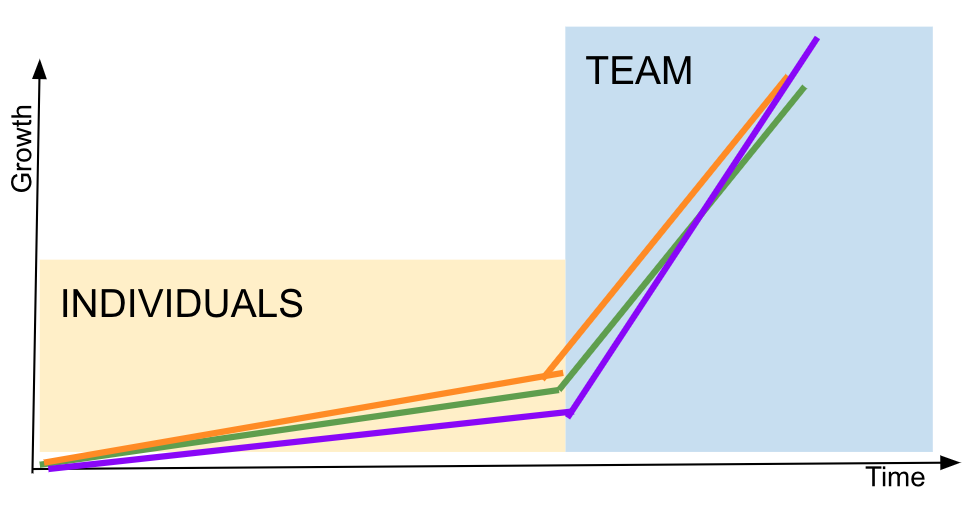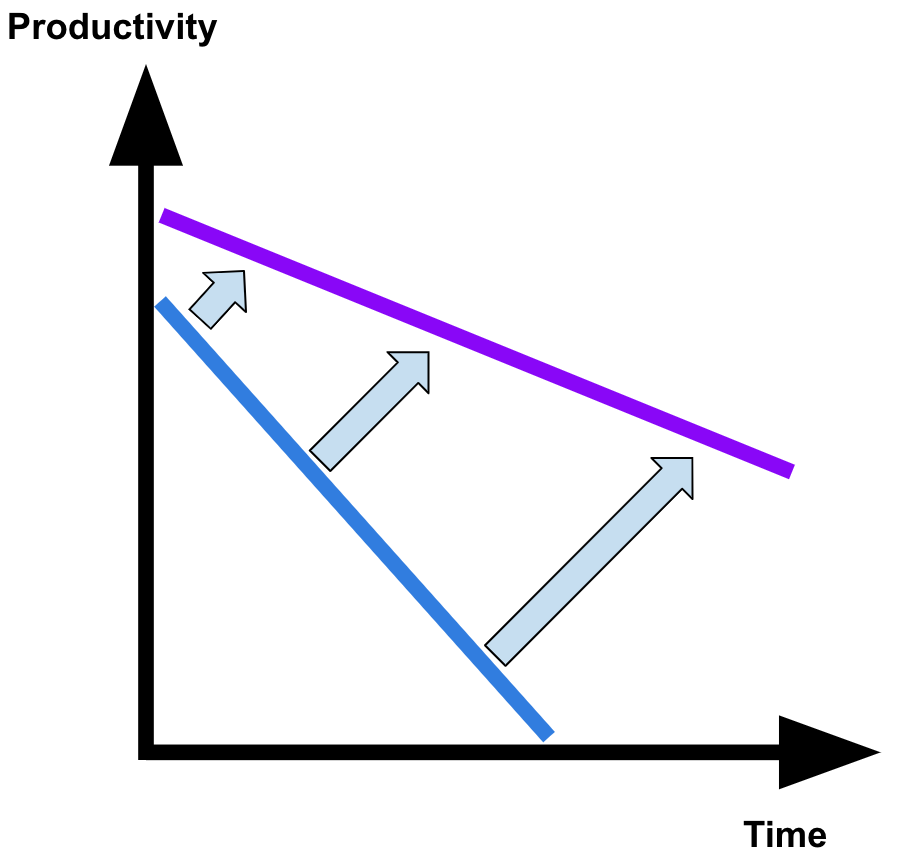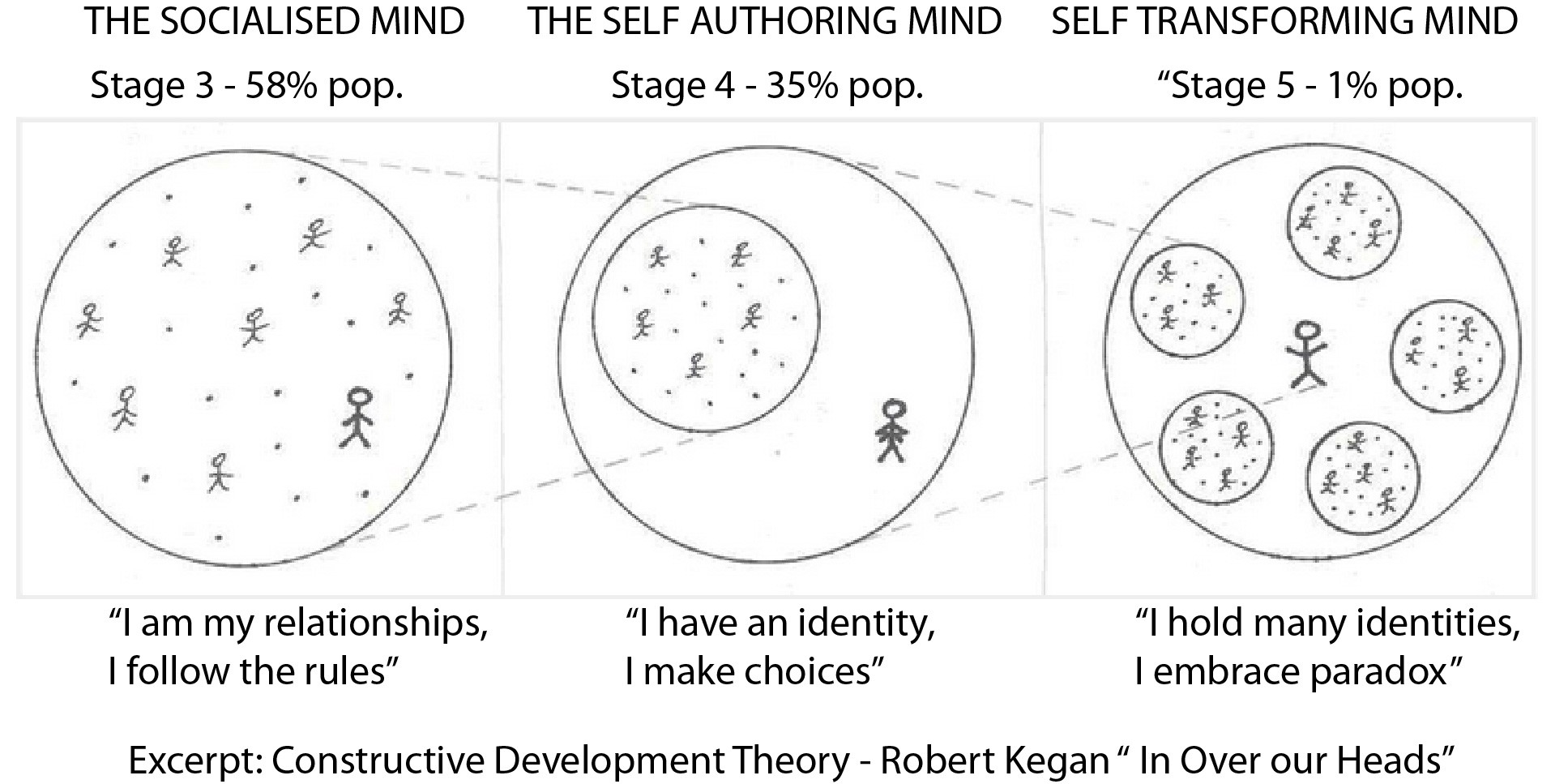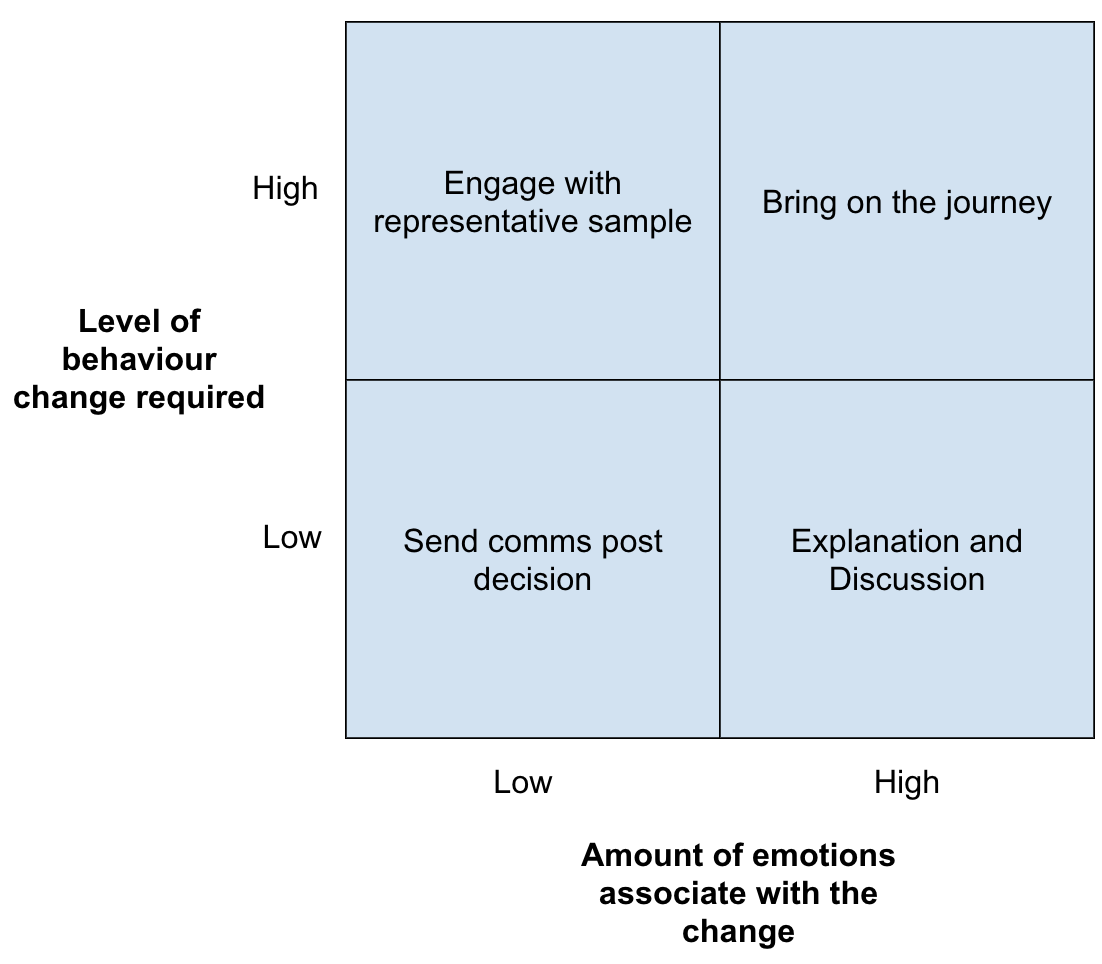The only problem to solve is problem solving itself
/By Duncan Anderson. To see all blogs click here.
Summary: creativity / innovation = problem solving ability. You can cultivate your ability to read, play a video game, do maths, empathise, remain calm… and innovate. Innovation is not magic, it is a process, it is predictable, it is inevitable!
500 years ago <10% of humans could read. Now 90% can read.
"Creativity (innovation) as the new literacy.”
I’d argue that currently less than 10% of humans can do more than very basic innovation.
Just like one can learn to read, I believe one can learn to innovate.
All repetitive physical and mental jobs are being replaced by machines. Therefore all future jobs will be problem solving based.
Elon Musk isn’t twice as innovative as average, he’s more like 1,000,000x times. Honestly I think I’m 100x more innovative than I was 2 years ago. I’m 100% confident that the average human can be 100x more innovative than they currently are!
This blog is some of my learnings on how to systematically improve innovation ability.
If we get Edrolo / OwlTail right, in a couple of generations, I think we can get 90% of humanity being able to do high level innovation :).
In other words, just like 200 years ago how 10% of humans could read but now 90% can. IMO, now 10% of humans can do high level innovation, if we get this right in ~50 years 90% will be able to :).
Jingle: Regurgitating others ‘if/then statements’ on queue IMO is menial, making new ‘if/then statements’ is meaning!
A model I have made for problem solving… yes problem solving problem solving!
Problem Solving = Innovation Ability = 1. Knowledge ingredients * 2. Recall * 3. Transfer * 4. Model Ability * 5. Communication
4. Model Ability =
To me, the most important variable.
The good thing is that IMO one can systematically build this ability in themselves and in others :).
For details on the other variables see the bottom of the blog
Everything can be represented in a 3 Dimensional Model and with Pieces and an Instruction Set
Problem Solving = 1. Pieces * 2. Instruction Set = 3. Solution (outcome of problem solving AKA 3 Dimensional Model)
2. Instruction Set = ‘4. Model Ability’
LEGO visualisation
4. Model Ability - Taxonomy + Visuals
L0: cannot see models
You see the end solution as ‘one piece’.
L1: can take an end solution and break it into a model
A big part of making models is to be able to break something into ‘1. Pieces’ and ‘2. Instruction Sets’. You need to be able to do this with amorphous concepts like ‘ideas’. For example an Atom with protons, neutrons and electrons is a ‘model’ of an idea.
L2: can make small modifications to an existing model to adapt to your desired outcome.
From a Jeep => Golf Cart. It’s very similar but does a mildly different job.
Only modifications to Pieces (no new pieces)
Only modification to the Instruction Set (no new steps)
So you would modify some ‘pieces’ and the ‘instruction set’ mildly to get this new ‘model’ :)
L3: you can make large modifications of an existing model.
From a Jeep => Bulldozer
Some new Pieces
Some new steps to the Instruction Set
Adding the front loader is a significant new piece onto of a ‘vehicle’ vs ‘modifications of the same parts for Jeep => Golf Cart’
You’d need new ‘pieces’ and new parts of the ‘instruction set’... but you are still working off the base ‘Jeep Instruction Set’.
L4: taking the concept of an existing model but taking it to a new context
The concept of building a motor vehicle can be applied to other areas, eg building an Airplane.
You are still making a physical machine, but this is mega different from a motor vehicle.
Majority new Pieces
Majority of steps in Instruction Set new.
L5: making a model from scratch
All new pieces, all new Instruction Set.
+++++++++++++++++++++
Detail
Model Overview - at some point I’ll do a deep dive on all variables of the model… this blog really only gets into ‘4. Model Ability’.
Problem Solving = 1. Knowledge ingredients * 2. Recall * 3. Transfer * 4. Model Ability * 5. Communication
1. Knowledge ingredients
All else equal the more Knowledge ingredients you have the better.
But IMO it’s best to get to ‘Competent / Proficient’ in as many fields as possible vs getting to be a ‘Master’ in one. I find that most insights come laterally. Positive Sum Problem Solving is helping improve the world in some way, the better understanding of the world you have, the better your ability to form a solution.
So get to proficient in finance, economics, politics, geopolitics, startups, design, management, philosophy, sociology, etc etc.
However having all the ingredients in the world is no good if you can’t do anything with them!
2. Recall
If you can’t recall a ‘Knowledge Ingredients’ it’s useless.
You improve recall by 1. Using ingredients and 2. Reading about them.
Studies show that everyone slowly forgets everything.
If I see a podcast / article on something similar to a ‘Knowledge Ingredient’ I’m already aware of I think ‘goodie’, a chance to 1. Recall and 2. See how someone else thinks about this ingredient and uses it as part of a bigger solution.
3. Transfer
Taxonomy:
L1: can only use the ‘Knowledge ingredient’ in 100% of the context where you found it.
L2: can use the ‘Knowledge ingredient’ in 50% of the context where you found it.
L1: can use the ‘Knowledge ingredient’ in totally new circumstances (ie in 0% of the context where you found it).
Knowledge in new circumstances is sick!
4. Model Ability
This is what this blog is going to be mainly about!
‘4. Model Ability’ is your ability to join individual ‘1. Knowledge Ingredients’ together into 3D Solutions.
Taxonomy:
L0: Don’t think in models. Just regurgitate rote-learned facts
L1: can only use existing models that you know.
IMO one can get 100% on the vast majority of high schools and university subjects with this and 'Transfer L1 - only in the context you learned the knowledge' :(.
Examples of models:
Momentum = Velocity * Mass
ICE ranking => Impact, Confidence, Execution
PSHE => Problem Solution How Execution
Classical Conditioning
IMO through textbooks we can systematically build skills beyond ‘L1 Model Ability’ for people!
L2: can make up 1x new reasoning step for a model. FYI most people really struggle here.
L3: can make up 2x new reasoning steps.
L4: etc. You ultimately need to be able to build 50 step new sequences of logic.
a big model is now 1000s of cells in a spreadsheet with linking logic and multiple paths :).
Comment:
IMO the existing high school education system does stuff beyond ‘L1: can only use existing models that you know’
The good thing is that I believe it’s possible to systematically teach / build ‘4. Model Ability’ in yourself and others.
5. Communication
“If you can't explain something to a 6 year old, you don't understand it yourself”. - Einstein
Einstein intelligence taxonomy:
L1: Smart
L2: Intelligent
L3: Brilliant
L4: Genius
L5: Simple
Comment:
If you can’t communicate a ‘solution’ it isn’t much of a solution. Being able to cut out all of the crap is serious challenge… and super rewarding and super fun!
Simple = simple to understand. Not ‘dumbing it down’.
Genius is explaining something complex simply.
Simplicity is actually complexity * good communication.
Simplicity is complexity solved. ETC!
+++++++++++++++++++++
4. Model Ability - Deep Dive
The LEGO analogy (FYI analogy is a key ‘5. Communication’ device)
I really love the analogy of LEGO for problem solving. I also LOVED LEGO as a kid.
Some people can only follow the instruction set to build something:
The individual pieces = 1. Knowledge Ingredients
The instruction set = 4. Model Ability
For better or worse IMO the vast majority of the traditional Secondary and Tertiary education system is trotting out “1. Knowledge Ingredients” someone else taught you in Solutions someone else taught you. There is no innovation here.
Learning about different fields (eg finance, economics, politics, geopolitics, startups, design, management, philosophy, sociology, etc etc) is adding new piece types
If you only know about one field (eg maths) you only have eg standard blocks.
Learning about a new field (eg philosophy) is adding the axles.
Then another field (eg economics) is adding glass panels.
Then another field (eg management) is adding wheels.
Visual version:
Comment:
The more types of pieces you have (fields of knowledge) the greater the solution possibility set you have.
If you want another analogy let’s take food :). Field 1 = vegetables. Field 2 = meat. Field 3 = spices. Field 4 = fruit. Basically the greater the ‘1. Knowledge ingredients’ you have the greater the solution possibility set you have. Knowing every single meat isn’t as important as knowing the major ingredients from each field.
IMO you want to be able to:
1. Make your own new pieces = ‘New “1. Knowledge Ingredients” ’ OR ‘ “3. Transfer” an existing “1. Knowledge Ingredient” into new context”
2. Make your own new instruction sets = “4. Model Ability”
Comment:
Again I think the existing education system does a poor job of this.
IMO everything be cultivated. Ability to play a video game, ability to read, maths ability, empathy, calm (meditation)... and problem solving ability!
4. Model Ability
‘4. Model Ability’ is your ability to join individual ‘1. Knowledge Ingredients’ together into Solutions.
Taxonomy:
L0: Don’t think in models. Just regurgitate rote-learned facts
L1: can only use existing models that you know.
IMO one can get 100% on the vast majority of high schools and university subjects with this and 'Transfer L1 - only in the context you learned the knowledge' :(.
Examples of models:
Momentum = Velocity * Mass
ICE ranking => Impact, Confidence, Execution
PSHE => Problem Solution How Execution
L2: can make up 1x new reasoning step for a model. FYI most people really struggle here.
L3: can make up 2x new reasoning steps.
L4: etc. You ultimately need to be able to build 50 step new sequences of logic.
a big model is now 1000s of cells in a spreadsheet with linking logic and multiple paths :).
Comment:
IMO the existing high school education system does not do stuff beyond ‘L1: can only use existing models that you know’
The good thing is that I believe it’s possible to systematically teach / build ‘4. Model Ability’ in yourself and others.
For fun: we’ll systematically be building ‘4. Model Ability’ AKA ‘Problem Solving Ability’ AKA ‘Innovation Ability’ in Year 7 Maths. Fun fun!
Why Modelling is important?
Without modelling ability you’re not able to solve new problems that haven’t been tackled before
This means you can’t help humanity do new things
Without modelling ability you’re only able to solve problems in the way that they are currently being solved.
If you’re only able to operate on L0 or L1, your only options to increase your impact are:
Use the existing solution and try and work harder, or work for longer
Even if you ignore the constraints of happiness or sleep, your impact has a ceiling as there are only so many hours in the day
Try and find other solutions that people have come up with to solve the same problem
Not a bad solution but this can be time intense to find what others have done and also makes you reliant on other people to solve the problems first
What is an easier way to do things than creating 100% of things from scratch (aka brute force)?
“It’s good to learn from your mistakes, it’s better to learn from others.”
Ingest as many ‘1. Knowledge Ingredients’ and ‘Instruction Sets’ from others as you can.
Then just modify the instruction set slightly.
Example:
Before:
5 Year Old Duncan modifications - “standing on the shoulder of giants”
Step 7 - let’s put a man with a gun on the top of this Jeep. That will be AWESOME!
Step 8 - Also, what kind of Jeep has 4 wheels? Only sh1t ones. Definitely need to have 6 wheels.
BTW it took me 5 mins to make the 6 wheel Jeep, I’m quite proud of it!
Comment:
To get to making the sweet Jeep with 6 wheels and a man with a gun on the top would be 8 step instruction set with many possible pieces per step, ie likely huge number of possibilities.
But adding a dude with a gun on the top and another row of wheels is building something new but wild less amounts of innovation needed.
Basically, a way to ‘hack’ ‘4. Model ability’ is to learn as many ‘instruction sets’ as possible and then just do small modifications to them.
How to level up your modification skills:
Learn about instruction sets (models) from multiple different places so that you amass a Latticework of Mental Models
The more instruction sets you’ve seen, the more ways to ‘put together pieces’ that you’ll have to draw upon
Look for ‘instruction sets’ from different places - from different disciplines, from different countries - the more varied, the better exposure you have!
Don’t just modify instructions sets, combine them!
The more you combine, the more unique the solution you’re going to be able to create
Combine instructions/models that usually aren’t used to being brought together!
E.g. star wars lego with technic
Combine more than just two instruction sets together!
Take the best bits of instruction from everywhere!
Why is leveling up modification skills important?
“Learning without purpose is intellectual mastubation”
Learning instruction sets doesn’t necessarily mean that you are good at solving problem
There is no point of collecting bunch of instructions if they just sit in a pile on a bookshelf and don’t do anything beyond make you feel smart
Sure, collecting instruction sets and even making modifications is cool, but unless those creations are doing something, you’re not actually having an impact!
I.e. if you’re just learning for the sake of learning
The only point of learning models is to be able to solve problems
The reasoning for learning disparate models and combining them is because they allow you to come up with unique and complex solutions, and that means that you can solve unique and complex problems like working out how to get to space or how to affect global policy change
Yes, sometimes you can just start with an approximately similar solution and make modifications hoping for one of them to work (i.e. use brute force)
But if you have multiple models, you can more efficiently see what modifications need to be made and how to make them and maybe find a suitable solutions after only 2 or 3 iterations.
Anyone can learn models and randomly make changes, far less can intentionally make upgrades to develop a fit for purpose solution to a problem
Ok, back in the real world a little bit more… perhaps the physic(al) world!
Newton invented calculus and much other stuff like conservation of mass etc.
Also, Newton had a sweet hair do
People with long greying hair are… DA best!
Most of what Newton came up with is taught in secondary school today, does that make you as good a physicist as Newton? I don’t think so. You are standing on the shoulders of those who came before.
A person doing a PHD in Physics will hopefully come up with something new that is well beyond anything Newton did… does that make them a better physicist than Newton? I don’t think so. They are standing on the shoulders of those who came before.
My learning:
Problem Solving = Innovation Ability = 1. Knowledge ingredients * 2. Recall * 3. Transfer * 4. Model Ability * 5. Communication
Read like a banshee.
Ingest everything you can. It’s the best way for “1. Knowledge ingredients”
Writing is thinking.
Write all the friggin time, it’s the best way to build “2. Recall * 3. Transfer * 4. Model Ability * 5. Communication”
Everything can be represented in a 3 Dimensional Model and with Pieces and an Instruction Set
Problem Solving = 1. Pieces * 2. Instruction Set = 3. Solution (outcome of problem solving AKA 3 Dimensional Model)
2. Instruction Set = ‘4. Model Ability’
LEGO visualisation
For everything I’ve tried, I’ve been able to represent EVERYTHING in “1. Pieces * 2. Instruction Set = 3. Solution”
Doing this is so much fun! Best game ever?
I didn’t use to try and do this, I didn’t use to know one could play ‘turn everything into “1. Pieces * 2. Instruction Set = 3. Solution” ‘, AKA reciprizing!
What do I think most people are doing when they ‘read a book’, ‘study for an exam’, ‘talk to someone’, ‘eat a meal’? IMO they are just looking at the ‘3. Solution’
If I eat a great meal I think ‘ohh yummy’, I don’t think ‘I can see the ingredients (1. Pieces) used and reverse engineer the recipe to recreate this (2. Instruction Set) yummy meal (3. Solution)’.
IMO when most people are studying they are just trying to memorise the ‘solution’ to know when to trot this out again (ie when they see a question that is similar).
They are not trying to understand why they solution makes sense. Ie they can only see the solution in 1 piece (ie a jeep), they don’t get what pieces are needed to make a Jeep.
Even if they understand the pieces and how they fit together as an end product, they don’t know how to build a Jeep from scratch.
Food equivalent:
The food item (AKA Duncan’s Sunday breakfast :) )
L1: French Toast - ‘3. Solution’ in one Piece
L2: An ability to explain the ‘3. Solution’ in many ‘1. Pieces’
L3: An ‘2. Instruction Set’ to make the solution from scratch which includes a ‘2. Solution’ in many pieces and all the ‘1. Pieces’ you need to make the solution.
L4: The ability to use the ideas in L3 and modify as you see fit to make wonderful new ‘3. Solutions’.
IMO when studying for a Year 12 exam most people are doing ‘L1: remember the solution in one piece’ and then reguitate on queue.
IMO this is equivalent of saying ‘French Toast’ when you get asked ‘what do you want for Breakfast?’ 100% of the time.
Don’t get me wrong, I liked this French Toast, I however don’t want to eat this for breakfast for the rest of my life. It’s rote learning an ‘if/then’ statement. It’s not learning that the JTBD is ‘breakfast’ and that 6 days a week Duncan wants a healthy breakfast and some variety in that.
The major modalities: reading, thinking, talking, writing & building
When you are reading you can be just “L1: eating the yummy french toast’ or you can be ‘L4: thinking about how to make the French Toast from scratch with ingredients and instruction set and then how you’d improve upon it’.
When you are thinking you can be just “L1: eating the yummy french toast’ or you can be ‘L4: thinking about how to make the French Toast from scratch with ingredients and instruction set and then how you’d improve upon it’.
When you are talking you can be just “L1: eating the yummy french toast’ or you can be ‘L4: thinking about how to make the French Toast from scratch with ingredients and instruction set and then how you’d improve upon it’.
When you are writing you can be just “L1: eating the yummy french toast’ or you can be ‘L4: thinking about how to make the French Toast from scratch with ingredients and instruction set and then how you’d improve upon it’.
When you are building you can be just “L1: eating the yummy french toast’ or you can be ‘L4: thinking about how to make the French Toast from scratch with ingredients and instruction set and then how you’d improve upon it’.
Don’t be shallow and only see the end outcome in one piece. Beauty is on the inside (ie piece and instruction set :) )! Be instructive in how you live!
Ok, how do you cultivate ‘3. Model Ability’.
I’ve got a book for you that will make you great at ‘problem solving’. I wish I read this book so much earlier in my life…
… just kidding. Haha!
If you want to get great at tennis you should… read books about tennis. NO you should spend the majority of your time playing tennis.
If you want to get great at poetry you should… read lots of poetry. NO you should spend the majority of your time writing poetry.
If you want to get great at screenwriting for TV… you should watch lots of TV. NO you should spend the majority of your time writing screenplays.
If you want to get great at problem solving… you should DO LOTS OF PROBLEM SOLVING!
Writing this blog is problem solving. I think I have figured out 20% of what I’ve written here before I started writing.
Writing is thinking! You only have 4 slots of working memory, so any problem that has more than 4 pieces can’t be solved in your mind, you need to ‘get it on paper’ to make progress.
The major modalities: reading, thinking, talking, writing & building.
IMO you can ‘problem solve / innovate’ when you are doing any of the modalities: reading, thinking, talking, writing & building. Ie what is French Toast, what JTBD does it do, how to make great french toast, etc.
OR you can do nothing, ie simply ‘hungry = eat ‘French Toast’ ’
I don’t know any shortcuts to getting good at anything. You have to put in the work. This doesn’t mean you can’t spend your time badly, but you can’t just ‘suddenly be good at something’ IMO.
An innovation taxonomy I use all the time:
0 => 1 : there was nothing before, you make something out of nothing!
1 => 10 : there is something but it’s only just working, needs serious improvements
10+ : something is working, only doing small improvements.
I’ve spent literally 1000s of hours trying to do ‘0 => 1’ and ‘1 => 10’ innovation.
In hindsight I think I’d done less than 10 hour trying to innovate at ‘0 => 1’ and ‘1 => 10’ in my entire life by the end of my University degree.
Why should you be good at something you’ve never tried to do?
I learned in the traditional education system. Learning = 1. Known destination + 2. Known path to destination
I didn’t do innovation in the traditional education system. Innovation = 1. Unknown destination + 2. Unknown path to destination
To be comfortable innovating you must be comfortable wasting lots of time. If you don’t know the destination of the problem you are trying to solve (ie the solution) then you invariably waste lots of energy trying to figure out the solution.
I think I spend 20-30 hours a week problem solving / innovating now. That is what this blog is.
If you want a place to begin, simply write for 2 hours a week on something you don’t understand as much as you like or about something you want to change / improve.






















































